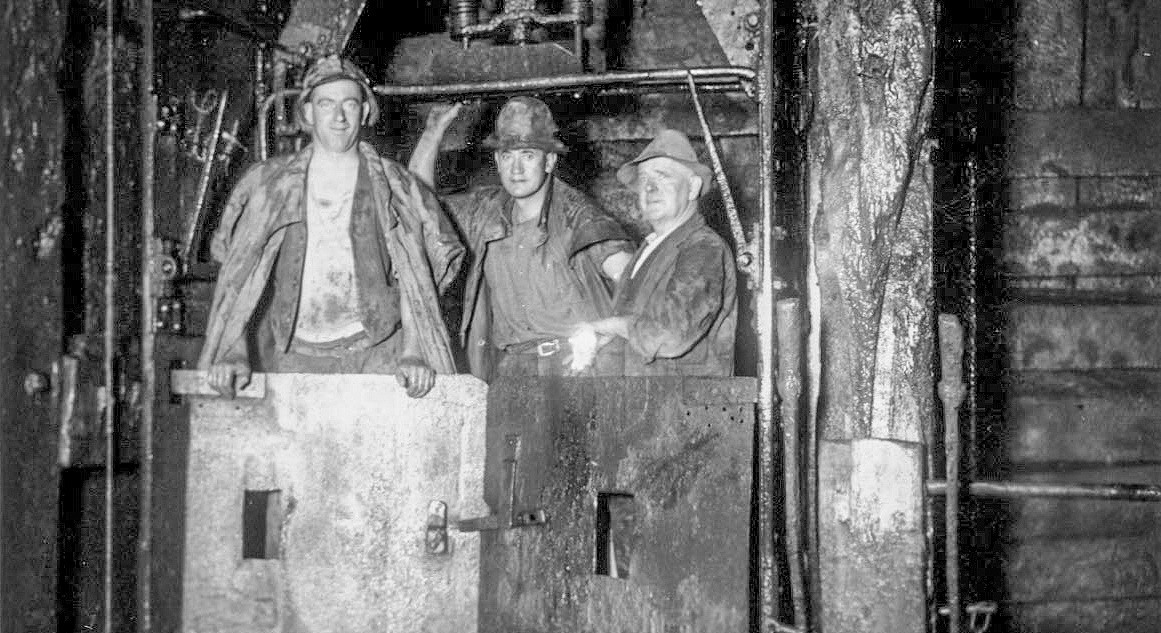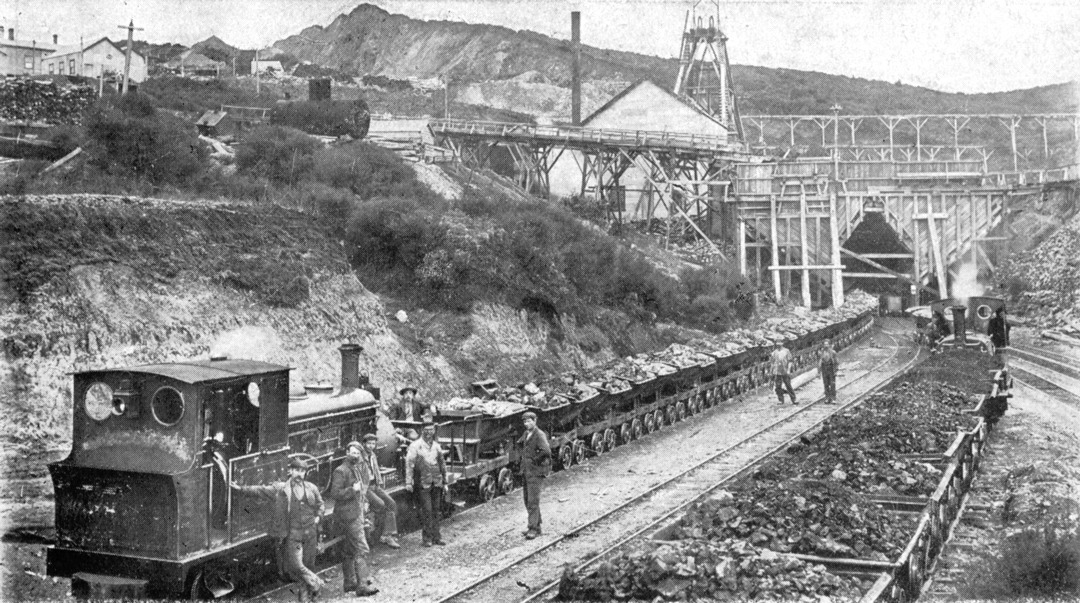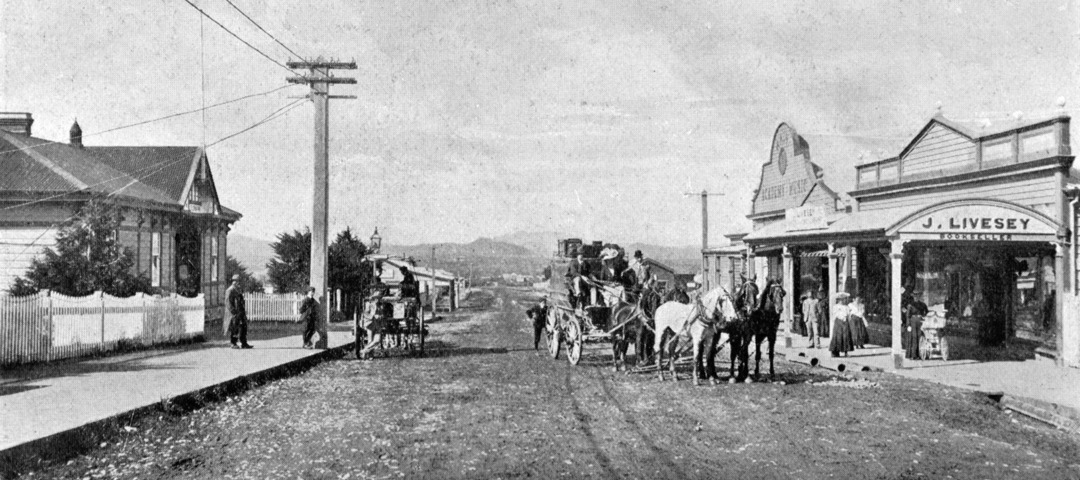About the historic mine
Gold was first discovered on Pukewa (Martha Hill, Waihi) in 1878 by prospectors John McCombie and Robert Lee. The samples of rock they had sent to be assayed were not considered worthwhile, so they left the area. Their claim was taken over by William Nicholl in 1879. He pegged out five acres, named the claim ‘Martha’ after a family member, and later a few small claims amalgamated to form the Martha Company. By 1882 the first battery was in operation.
The first Waihi Gold Mining Company
In 1890 the Martha Company and other claims were bought by the Waihi Gold Mining Company of London, who invested a great deal of capital into the mine.
At the time, trials were being carried out to find a more efficient way to extract precious metals from the quartz rock. By 1894, the Forrest / MacArthur process had been developed and the use of cyanide in the gold extraction process was adopted world wide. This process enabled a higher percentage of gold and silver to be extracted from hard rock, making many operations viable that would otherwise have had to close.

The Martha Mine
The Martha Mine became one of the most important gold and silver mines in the world. By 1952, when the mighty Martha Mine closed, around 5.6 million ounces (174,160 kg) of gold and 38.4 million ounces (1,193,180 kg) of silver had been produced from 11,932,000 tonnes of ore.
Seven vertical shafts had been sunk for the underground Martha Mine; the deepest was 600 metres from the surface. Radiating from the shafts was a network of 175 kilometres of tunnels on 15 horizontal levels. A workforce averaging 600 men was employed over the 70 year life span of the mine. In 1909, when gold production peaked, a total of 1500 people were employed in the mine and at the Victoria Battery.
Explosives were used to loosen the rock. The ore was mined with picks and shovels and loaded into wagons. Miners pulled or pushed the wagons inside the tunnels on carriage rails. Sometimes horses were used to pull the wagons. The ore was weighed and sent to the surface in cages, similar to lifts. Ore was then loaded onto the rake train to be transported to the Victoria Battery at Waikino, where it was crushed and treated to extract the gold and silver.

Groundwater was pumped out of the workings to enable the miners to work in the tunnels. From 1904 to 1913 the dewatering pumps were powered by steam engines that were housed in the Cornish Pumphouse, a landmark that still stands beside the Martha Mine today.
Electricity was introduced in 1913. The first hydro electric power station on the Waikato River was built by the Waihi Gold Mining Company at Horahora. This power station was later flooded when Lake Karapiro was formed. Around 7000 litres per minute of tepid water was pumped from underground. It flowed through the deep gutters lining Seddon Street to the Ohinemuri River and also filled Waihi’s public swimming pool.
Production
During the period Martha was mined, other claims were also registered in the Waihi region. These included the Amaranth, Dulcibel, Rosemont, Union, Winner, Britannia, Old Waihi, Silverton, Nelson & Nut and the Young Colonial. Of those registered claims, only a few produced gold. Some of the main producers (with their values in pounds) were: Martha Co./ Martha Extended Co. (1882-1886) £17,370. Union Co. (1885-1887) £2,375. Rosemont Co. (1885-1889) £932. Silverton Co. (1886-1889) £48,346. Union Waihi, Rosemont & Silverton Waihi Co’s. (1887-1902) £107,048. Waihi Gold Mining Co. (1887-1954) £28,469,011. Waihi Grand Junction Co. (1897-1939) £2,739,623. Cassels Co. (reclaimed tailings, 1893-1896) £19,285.
From 1882 to 1954 the Waihi area produced a total of £31,403,981 worth of gold. At the Martha Mine, 11,932,000 tonnes of ore was mined, yielding 174 tonnes of gold and 1,193 tonnes of silver.
This production of 5.6 million oz of gold and 38.4 million oz of silver, at bullion prices (June 2008) of NZ$900 per oz for gold and NZ$15 per oz for silver, would give a value of around $NZ 5,000,000,000 for gold and $NZ 576,000,000 for silver.

The end of the original Martha
Mining did not end in 1952 because the Martha had run out of gold; the current operation is evidence of this. Rather, a series of factors led to a decline in production:
- the international gold price was fixed at $US35 an ounce, limiting the revenue the mine could make
- the machinery needed to be updated; although the technology was available to do this, the money was not
- there had been two World Wars and the Depression of the 1930s, depleting manpower and creating a difficult economic climate.
It was not possible, given these factors, to profitably mine the lower grade ore.
In the 1970s and early 1980s the gold price increased. Exploration and prospecting work identified the economic resource that is being worked today.
References and acknowledgements
Information in this section has been adapted with permission from Gold Mining at Waihi 1878 to 1952, McAra, J.B., Martha Press 1988 (revised edition).